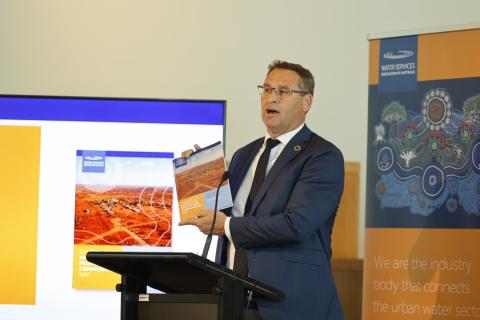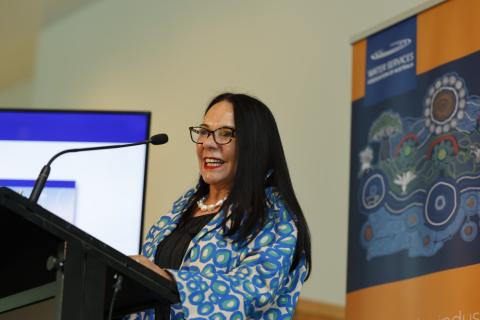On 7 November 2022, we were pleased to have the Hon Linda Burney, Minister for Indigenous Australians launch our Report ‘CLOSING THE WATER FOR PEOPLE AND COMMUNITIES GAP: IMPROVING WATER SERVICES TO FIRST NATIONS REMOTE COMMUNITIES’.
In launching the Report at Parliament House in Canberra, Minister Burney said it:
"provides a comprehensive review of remote water services and elevates the voices of First Nations people. I thank you for your efforts to drive change for First Nations communities and thank you for working with the communities themselves. After all, we know that better outcomes are achieved when First Nations peoples are involved in decision making on policies and programs that affect their daily lives".
The Minister also said that:
“Many remote First Nations communities across Australia face challenges accessing safe and reliable sources of water. This is simply unacceptable. An adequate, safe supply of water is critical for so many aspects of life. It is essential for health, the environment and even culture. From drinking water, to cooking and cleaning, washing clothes and taking showers. And water has significant social and spiritual meaning for First Nations people – with many people believing that: If the water is healthy, Country is healthy. If Country is healthy then the people and culture will be healthy.”
‘We estimate that it will require a minimum investment of $2.2 billion to bring drinking water in line with the Australian Drinking Water Guidelines, more when you include replacing old pipes and plumbing’ said Adam Lovell, Executive Director of the Water Services Association of Australia.
Over 500 First Nations communities do not have regular water quality testing. First Nations communities, particularly in remote areas, are receiving drinking water with levels of uranium, arsenic, fluoride and nitrate that are above levels against the Australian Drinking Water Guidelines.
WSAA welcomes the recent Australian Government changes to the Investment Framework for National Water Grid funding to allow for a broader range of projects to be considered including essential town water supplies in regional and remote communities, as well as increased project involvement of First Nations peoples. However, it is short on details about how First Nations communities will benefit.
Our Report finds that:
- All states and territories should formalise the Australian Drinking Water Guidelines to ensure at least a minimum quality standard is met whether you live in Sydney, Shepparton or Yuendumu.
- Ongoing significant investment is needed in both water quality monitoring and an innovation fund to develop new technologies that are resilient to climate change impacts, and ideally integrated with renewable energy and digital communications.
- First Nations communities need a stronger voice in the services they receive. Our stakeholder mapping shows complex interactions across a myriad of agencies and unclear accountability.
The Report contains case studies which show that dirty or smelly water, or taps clogged with calcium deposits cause significant knock on effects for communities beyond drinking water which adds to the urgency of the recommendations.
There are signs of positive action emerging. For example:
- The WA Government is investing in water infrastructure for communities in the Kimberley
- In the APY lands in South Australia, plumbing courses are helping communities to maintain their health hardware
- In Borroloola in the NT, there has been a significant shift in engagement and a new water treatment facility
- In Queensland, the Health Department has been working hard with local Indigenous councils on improving skills of operators of water treatment plants.
WSAA believes that this is also an opportunity – a time to invest in culturally sensitive skills and training and for First Nations businesses to grow and expand expertise in water services.
‘The time to improve this situation is now. The Closing the Gap targets for infrastructure which calls for equitable services and the UN conference on Water and the Sustainable Development Goals in New York in March 2023 is both an opportunity and a call to urgently improve water quality for First Nations communities’, said Mr Lovell.
The full report is available on the WSAA website here: https://www.wsaa.asn.au/publication/closing-water-people-and-communities-gap-review-management-drinking-water-supplies


| Attachment | Size |
|---|---|
| 138.47 KB |
